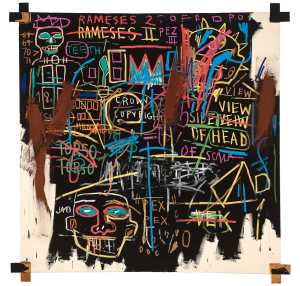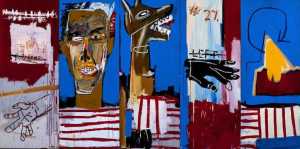Specifications
| Title | Prière de toucher |
|---|---|
| Material and technique | Foam rubber and velvet on cardboard, offset on paper |
| Object type |
Print
> Two-dimensional object
> Art object
|
| Location | This object is in storage |
| Dimensions |
Height 23,8 cm Width 43 cm Depth 3 cm |
|---|---|
| Artists |
Graphic artist:
Marcel Duchamp
: Lydia Winston Malbin : Harry Winston |
| Accession number | MB 1990/4 (MK) |
| Credits | Purchased 1990 |
| Department | Modern Art |
| Acquisition date | 1990 |
| Creation date | in 1947 |
| Provenance | Lydia & Harry Lewis Winston, New York; Sotheby’s New York, 16 May 1990, The Collection of Lydia Winston Malbin, no. 91 |
| Exhibitions | Paris 1947*; London 1966*; London 1997; Rotterdam 1998a; Rotterdam 2017b |
| Internal exhibitions |
Collectie - surrealisme (2017) |
| External exhibitions |
Dalí, Magritte, Man Ray and Surrealism. Highlights from Museum Boijmans Van Beuningen (2023) Only the Marvelous is Beautiful (2022) A Surreal Shock – Masterpieces from Museum Boijmans Van Beuningen (2021) Surrealist Art - Masterpieces from Museum Boijmans Van Beuningen (2021) A Surreal Shock. Masterpieces from Museum Boijmans Van Beuningen (2023) |
| Research |
Show research A dream collection - Surrealism in Museum Boijmans Van Beuningen |
| Literature | New York/Philadelphia 1973, p. 306, cat. no. 164; Tomkins 1997, pp. 360-61; Naumann 1999, pp. 165-67; New York 1999, pp. 165-67; Schwarz 2000, pp. 787-88, cat. no. 523a; Von Berswordt-Wallrabe 2003, pp. 161-63; Marcadé 2007, pp. 386-87 |
| Material | |
| Object | |
| Technique |
Offset print
> Mechanical
> Planographic printing
> Printing technique
> Technique
> Material and technique
|
| Geographical origin | France > Western Europe > Europe |
























